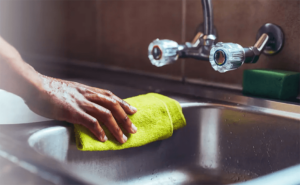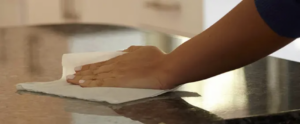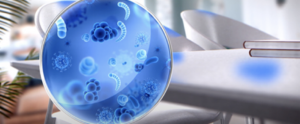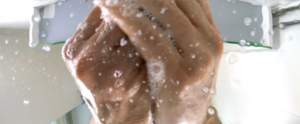Do you know the difference between cleaning, sanitizing, and disinfecting?
Though the terms may seem interchangeable, there’s a big difference between cleaning, sanitizing, and disinfecting. We’re breaking it down and explaining why it’s important to know the difference so you can help keep your business protected and truly clean.

Let’s start with germs.
If it’s a surface someone touches, it probably has germs. Actually, even if nobody touches it, it probably still has germs. That’s because germs are everywhere. They live both inside and outside the human body. While some thrive in places like your gut and help with healthy digestion, others exist on your skin or other surfaces and are passed around constantly. There are many good germs that help our bodies stay in balance and actually work to build our immune systems. However, the bad germs can cause a breakdown in our bodies, leading to illness and infection. That’s why it’s important to know how to get rid of bad germs in order to help keep your community protected.
So what’s the difference between cleaning, sanitizing, and disinfecting?
CLEANING COMES FIRST
Cleaning is the act of getting rid of dirt and mess where germs can grow. This includes wiping up food that has spilled or sweeping up dirt from outside. Even though cleaning can involve using soap and water, it’s still a surface level clean. That means that cleaning can help lower the risk of spreading infection, but it doesn’t generally kill germs, including bacteria and viruses.

SANITIZING HELPS ELIMINATE BACTERIA
Sanitization is the act of killing bacteria, but it doesn’t kill viruses. You’ll want to sanitize surfaces that come in contact with food.1 Sanitizing doesn’t always require chemicals. It can be done with steam or extreme heat of at least 170 degrees F, making it easier to sanitize fabric, carpet, and upholstery.2 Check the label on Dettol products and follow the sanitizing instructions.

DISINFECTING HELPS KILL REMAINING GERMS
Disinfecting is the act of helping to eliminate germs, including viruses and bacteria. Disinfecting takes cleaning to the next level to help ensure illness causing germs don’t spread. By using products like Dettol® Disinfecting Wipes and Dettol® Disinfectant Sprays, you kill 99.9% of bacteria and viruses living on surfaces* and help lower the risk for spreading illness causing germs.

ONE MORE THING: ALWAYS WASH YOUR HANDS
Your hands deserve equal if not more attention as they are one of the main means for germs to travel. In fact, the CDC specifically recommends washing your hands as one way to slow the spread of COVID-19.3 Make sure you’re thoroughly washing them for 20 seconds with soap and water.4

A one-two punch to knock out germs
Always remember, just because something looks clean, doesn’t mean it’s disinfected. The best way to help reduce your risk of spreading germs is to first clean your surfaces, removing any stuck-on dirt and grime, and then sanitize and/or disinfect.
It is simple to help protect you and your community against the spread of illness causing germs.
- Clean your surfaces, removing any stuck-on dirt and grime
- Sanitize and/or disinfect with Dettol® All Purpose Cleaner, Dettol® Disinfectant Spray or Dettol® Disinfectant Wipes.
*When used as directed on hard-non porous surfaces.



